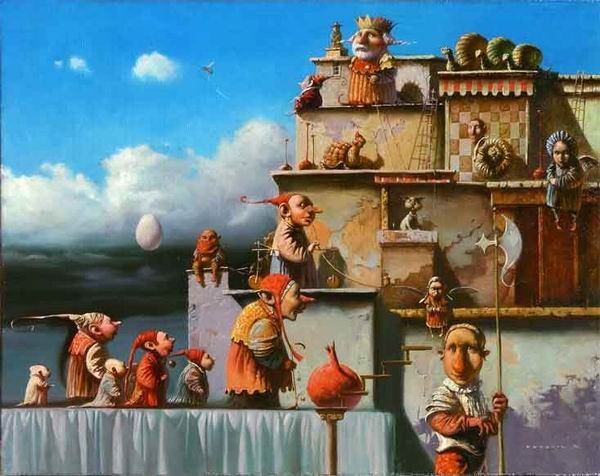
The Artist's Gambit, Part 2
Andreas Paul Weber (1893–1980) was a German artist, illustrator, and lithographer known for his satirical and often politically charged works (we met him already in Part 1, Chess as A. Paul Weber's Mirror of Society). His style frequently incorporated elements of caricature, social commentary, and a dark, sometimes grotesque humor, reflecting the turbulent times he lived through, including both World Wars and the Weimar Republic. Weber's art often tackled themes of human folly, societal structures, and the absurdities of everyday life, using a sharp, expressive line and a monochromatic palette, typically in ink or charcoal.
 Schachspieler
Schachspieler
 “Doppel” meaning “double,” this style is a bigger and stronger version of the lower-gravity German-style bock originally made by monks in Munich.
“Doppel” meaning “double,” this style is a bigger and stronger version of the lower-gravity German-style bock originally made by monks in Munich.
 Schachspieler beim Wein
Schachspieler beim Wein
 The doctor and the patient playing chess
The doctor and the patient playing chess
 Eheschach
Eheschach
The title Eheschach (The Marriage Chess) suggests a metaphorical chess game between spouses. In the drawing, we see the two engaged in a tense, chaotic scene. The chessboard and scattered pieces on the floor reinforce the idea of a strategic, competitive struggle. One figure stands in a dominant, almost aggressive posture suggesting triumph or accusation, while the other is on the ground, seemingly defeated or overwhelmed, implying submission.
Weber’s use of exaggerated facial expressions and body language conveys intense emotion—anger, frustration, or despair.
The imagery suggests that Weber is using the game of chess as a metaphor for the power dynamics and struggles within a marriage. Chess is a game of strategy, intellect, and control, often associated with battles of wit. By applying this to marriage, Weber seems to be commenting on the competitive, sometimes adversarial nature of relationships, where each partner might be vying for dominance or control. The scattered chess pieces and the chaotic scene imply that this "game" has spiraled out of control, leading to emotional turmoil.



 Die beiden Anwälte (The two lawyers)
Die beiden Anwälte (The two lawyers)
 Die Diplomaten
Die Diplomaten
The title Die Diplomaten suggests a critique of diplomacy and political strategy during the early Cold War era, a time of intense global tension between the East and West. The chess game symbolizes the calculated, strategic nature of diplomatic negotiations, where each move is deliberate and the stakes are high. The monstrous appearance of the diplomats could imply Weber's view of political leaders as ruthless or dehumanized by their pursuit of power, willing to engage in a "game" that affects entire nations.
The use of animalistic figures might also draw on historical allegories, such as those in fables. Here, the creatures could symbolize greed, aggression, or cunning—qualities Weber might have associated with the political figures of his time. The detailed, almost chaotic linework adds a sense of unease, reinforcing the idea that beneath the veneer of civilized diplomacy lies a more primal, dangerous struggle.
This artwork touches on universal themes. The chessboard represents the calculated nature of power dynamics, where every move is part of a larger, often hidden agenda.
The monstrous diplomats suggest that those in power may lose their humanity, becoming more like beasts driven by instinct than rational beings.
By portraying serious diplomatic negotiations as a game between grotesque creatures, Weber highlights the absurdity and potential futility of such endeavors when driven by ulterior motives.
 The Weber's artwork invites viewers to question the morality and intentions of those who "play the game" of international relations. It’s a testament to his remarkable skill as an artist and his commitment to using art as a lens for social and political reflection.
The Weber's artwork invites viewers to question the morality and intentions of those who "play the game" of international relations. It’s a testament to his remarkable skill as an artist and his commitment to using art as a lens for social and political reflection.
.
More Artwork from Roaringpawn:
Chess Art by Cheval (my second most-viewed post with 11,455 clicks so far)
Playing Chess in the Tuscan Countryside
My Chess Sucks, Here are Options for Improvement
Best American Chess Photography
.
.

